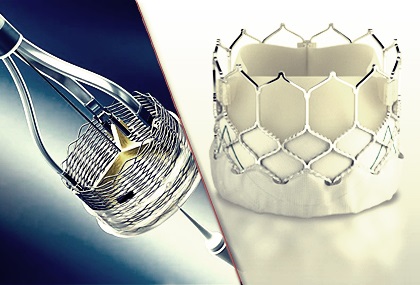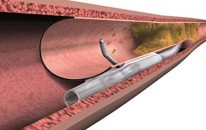The new generation devices for transfemoral transcatheter aortic valve replacement have been optimized to improve valve position and reduce residual aortic regurgitation. This study compared 30 day, 12 month and 24 month outcomes of the repositionable, Lotus valve, with controlled mechanical expansion, and the balloon-expandable valve Edwards Sapien 3. Primary end point was all cause mortality…
How can we classify aortic stenosis in patients who underwent TAVR?
Courtesy of Dr. Carlos Fava. Aortic stenosis can present different hemodynamic patterns, such as low flow and low gradient with reduced or preserved ventricular function. However, evidence on the evolution of different hemodynamic patterns after transcatheter aortic valve replacement (TAVR) is limited. This study consisted in a retrospective analysis of 368 patients who underwent TAVR. The population was divided in…
Increasing operator experience improves TAVR outcomes
The introduction of transcatheter aortic valve replacement (TAVR) into clinical practice in the United States has been a tightly controlled process aimed at optimizing patient outcomes and minimizing the learning curve. Many strategies have been used to reach a rational dispersion for this new technology, including choosing sites with enough volume, and adequate operator training…
Protection Systems Reduce Stroke and Mortality in Carotid Artery Stenting
So far, the main controlled randomized studies have almost exclusively been aimed at comparing the efficacy and safety of carotid artery stenting vs. endarterectomy. Almost all of them have left at operator discretion the choice of the devices to be used during the procedure, which is why there is few direct information to help us…
MRS vs. DES: Which one is associated with better long-term quality of life?
The SYNTAX (Synergy Between Percutaneous Coronary Intervention With Taxus and Cardiac Surgery) trial, which included patients with 3-vessel or left main coronary artery lesions, showed that myocardial revascularization surgery (MRS) turned out to be superior to angioplasty with drug-eluting stents (DES), mainly due to differences in acute myocardial infarction and repeat revascularization. Up to this work, patient sensations (which can be…
In which patients should we attempt chronic total occlusion rechanneling?
Although chronic total occlusion (CTO) is a common finding, there is little consensus as to when such lesions should be treated routinely with angioplasty. Benefits of successful rechanneling include relief of symptoms, resolution of ischemia, improvement in ventricular function, and avoidance of myocardial revascularization surgery. Unsuccessful rechanneling is common and may be associated with several adverse events,…
Lotus Valve performance related to pacemaker implantation in patients after TAVR
Courtesy of Dr. Agustín Vecchia. Paravalvular leak was once considered the greatest disadvantage of TAVR when compared to conventional surgery. Nowadays, new devices and more-experienced operators have managed to “control” this phenomenon, keeping related statistics within acceptable ranges. Repositionable-valve Lotus may probably offer the most effective solution for this event; however, it is associated with high rates of…
Successful CTO reduces local and remote residual ischemia
Courtesy of Dr. Carlos Fava. The presence of Chronic Total Occlusion (CTO) is about 30%, with an ischemic threshold between 10% and 12.5% to justify rechannelization. Using the new devices, the new guidelines and with more experience operators, these procedures are successful in 10% to 30% of cases. More often than not these patients are not treated…
Post DES Dual Antiplatelet Therapy Still under Debate
The NIPPON trial (Nobori Dual Antiplatelet Therapy as Appropriate Duration) was a randomized study comparing a short dual antiplatelet therapy scheme (6 months) vs. a prolonged scheme (18 months) in patients receiving the Nobori drug eluting stent (Terumo, Tokyo, Japan) with a biodegradable abluminal polymer. It included 3,773 patients with chronic stable angina or acute coronary…
PCI Mortality and Volume in One Center: Associated?
The relationship between procedure volume and prognosis after a percutaneous coronary intervention remains unclear. Intuitively, we tend to think the larger the volume, the better the results and, consequently, the lower the mortality. But when analyzing the literature, we find studies for and against this thesis. Evidence does support the idea that volume improves outcomes…









